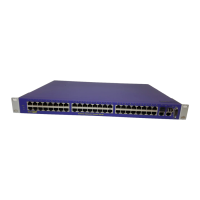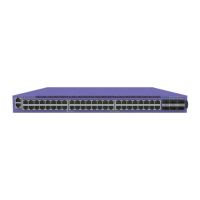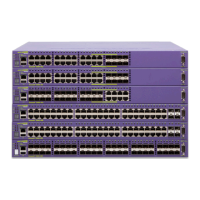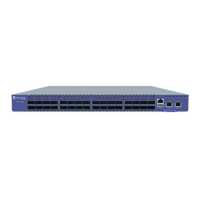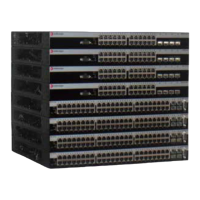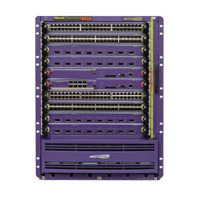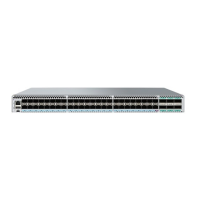240 Summit 200 Series Switch Installation and User Guide
Configuring Stacked Switches
Figure 40: Slot Assignments with the Master in the Middle of a Chain
To manually assign a slot number to a switch, you can map the MAC address of the switch to a specific
slot number in the stack by entering the following command:
configure stacking slave slot <n> mac_address <MAC>
If a switch has a MAC address that is mapped to a slot, the master assigns the slot to that MAC
address. Otherwise, the master assigns the slots in ascending MAC address order. Stack Discovery
always attempts to find the largest stack possible. If a slot goes down, it becomes slot 0 and the
remaining members might reorder depending upon the MAC address.
Next, the master interrogates the members in the stack for their switch type so that the master can
determine the validity of configuration commands.
On stack members, the current stacking port configuration is stored in NVRAM. Previous configuration
information, from when the switch acted independently, is stored in primary or secondary flash
memory. The configuration in flash memory is left intact, but is now ignored. Stack members receive
their configuration information from the master, with the exception of the
unconfig switch all,
unconfig stacking, and disable stacking commands. See “Recovering a Stack” on page 242 for
details on how to use these commands.
Configuring Ports and VLANS on Stacks
After stacking is enabled on the master, all commands entered on the master through the command line
interface (CLI) that require a port number or a port list must use slot-based port numbers. Ports on
stacks are addressed as a combination of the slot number and the port number. The syntax for a
slot-based port number is as follows:
slot:port
For example, to specify port 1 on stack member 2, you would indicate 2:1.
You can also use wildcard combinations (*) to specify multiple slot and port combinations. The
following wildcard combinations are allowed:
• slot:*—Specifies all ports on a particular slot
• slot: x-slot: y—Specifies a contiguous series of ports on a particular slot
• slot a: x - slot b: y — Specifies a contiguous series of ports that begin on one slot and end
on another slot
The master is always referenced as slot 1 in all CLI commands. For example, the following command
attempts to add all of the ports on the master to VLAN V1:
config vlan v1 add po 1:*
Slot 1
master
Port
25/49
Port
26/50
Slot 5 Slot 6Slot 2Slot 3Slot 4
ES2K003
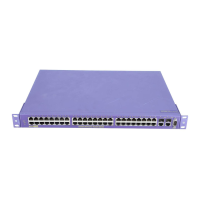
